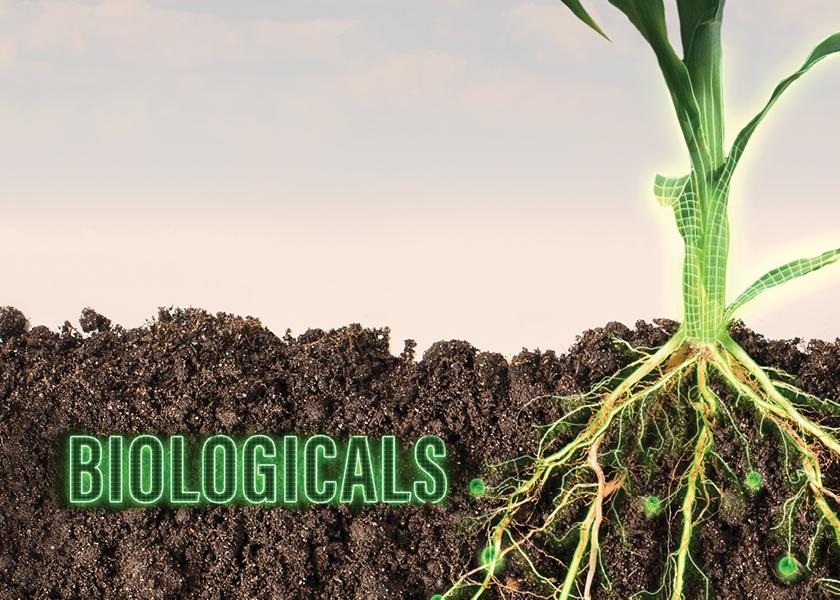A Big Future For Biologicals

Major investments are bringing more products to the field
Is the wind in the sails of biological products? Current trends say yes.
Biological sales hit $2 billion in 2012 and jumped to $7 billion in 2021, according to DunhamTrimmer, a market research group focused on global biological markets. In row crops, annual sales of biological products were estimated at $400 million in 2020 but will grow $1.9 billion in 2030.
Four trends are driving this growth, says Mark Trimmer, DunhamTrimmer managing partner:
- Consumer demand for reducing pesticide use, especially in produce.
- Favorable policies in the U.S., European Union and other countries.
- Benefits to growers with pest resistance management aspects.
- As consumers look for year-round production of produce, biostimulants can help crops tolerate year-round weather stresses.
Trimmer says biologicals are projected to have a growth rate that’s two to three times faster than the traditional crop protection market. The firm projects biocontrols and biostimulants will have global sales of more than $15 billion by 2027.
NEW IN-FIELD OPTIONS
In the next five years, Certis Biologicals has seven product launches in its pipeline — ranging from insect and nematode control to disease control. Currently, the company has 12 products registered for use on row crops.
“There’s a concern that biologicals are so expensive or they don’t work in row crops,” says Amy O’Shea, Certis president and CEO. “That’s not true. They may be different, but they would be surprised that many of our products can be used with and alongside synthetic chemistries.”
STK bio-ag technologies vice president of global sales, Yair Nativ, sees biofungicide sales growing 15% to 20% annually in the next three years. Its product Regev is the first “hybrid” pre-mixed combination of a botanical- based biopesticide with a chemical pesticide. The company distributes products in the U.S. with SummitAgro.
While biofertilizers are a smaller piece of biologicals in sales today, Marcus Meadows-Smith, CEO of BioConsortia, sees a future where nitrogen fixation biological products could be $50 billion in sales. The company is using its Advanced Microbial Selection process to identify microbes for biofertilizers, pest management and biostimulants.
“One of top focuses is nitrogen fixation where we’ve seen early results from the greenhouse where we can reduce synthetic fertilizer by 50% and maintain yields,” he says.
3 Innovation Areas for Biologicals
These reasons are propelling new biological products, says Mark Trimmer, DunhamTrimmer managing partner.
- Microbials are an area for fast growth, and a component that affects all three categories of biologicals.
- Most relevant for biostimulants and biocontrols, many companies are investing in peptide-based technologies.
- Disruptive advancements with pheromones will reduce the cost of product development and open new crop use opportunities for biocontrols.







